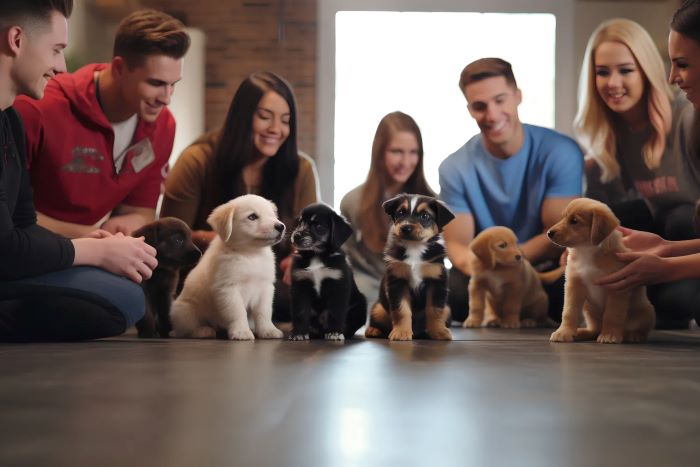There is no doubt that the most important time in a new puppy or kitten’s life is between the ages of 3 and 12 weeks. During this short timespan, the adolescent will learn who it is, who you are, and who and what all of those other living, moving beings surrounding it are as well.
This stage of life in which such vital learning takes place is called the socialization period.
If for some reason a kitten fails to be properly introduced to members of its own species or to other species (including children) during this time, then there is a good chance that it will not recognize these individuals for what or who they are, and it might even show aggressiveness toward them.
Improper or negative socialization is even worse than no socialization at all. Any traumatic experience or physical punishment that occurs before 12 weeks of age could permanently scar a pet’s personality to a specific group or species for life.
For instance, cats that exhibit a fear of men were most likely abused by a member of this sex during the socialization period. This is one reason why all physical punishment should be avoided during this time in your pet’s life. Such activity could damage its relationship with the person doing the punishing for life!
The existence of this socialization period is one reason why you should select kittens less than 12 weeks of age when choosing a new companion. If you don’t, you have no way of knowing whether proper socialization has taken place, and you might be faced with behavioral problems in the future.
Socializing a pet is not difficult if you remember to keep all interactions positive and to guard against any physically and emotionally traumatic situations.
Before introducing a kitten to other animals, be sure that it and the other animals are current on vaccinations and dewormings. In addition, always be sure that the animals you are planning to introduce it to are socialized themselves, or else you could have a battle on your hands.
Weekend excursions to a park and/or neighborhood strolls are some of the more opportune ways of introducing your new pet to other animals and to other adults and children. Allow children to freely interact with your kitten, but again, be sure that none gets too rough.
For best results, you should repeat such encounters throughout its socialization period. And by all means praise your pet for good behavior during these interactions. It will leave a lasting impression on its personality!
One word of caution: Socialization, like any personality skill, can eventually be lost if it is not reinforced periodically. As a result, even as your cat matures, don’t just discard those trips to the park or strolls through the neighborhood. Remember: You have to use it or lose it!
Desensitization training is often overlooked by most new pet owners, yet it can be one of the most valuable tools for preventing stress and behavioral problems as their cat matures. There are three types of desensitization that need to be accomplished: (1) contact desensitization, (2) separation desensitization, and (3) noise desensitization. The first two types should be instituted at 8 weeks of age, and the third should commence at 16 weeks of age.
The first type, contact desensitization training, will condition your pet to allow its haircoat, feet, ears, and mouth region to be handled. This is vitally important for your pet’s preventive health care program, for it will allow you to brush hair, trim nails, brush teeth, and clean ears without a fight!
When interacting with your kitten, make a special effort to gently touch these regions with your fingers several times a day. Don’t attempt to perform any of the grooming procedures mentioned above with the actual utensils; instead, simply go through the motions with your hands and fingers.
Soon, your puppy or kitten won’t think twice when you reach out and grasp a paw or an earflap. Once it has been desensitized to your touch, then you graduate up to actual grooming utensils. Just remember to temporarily discontinue your efforts if a struggle ensues.
Any negative or painful experience involving these regions during your initial training efforts can produce the exact opposite effect and create an individual that will struggle vehemently when attempts are made to perform these simple procedures.
The goal of separation desensitization training is to desensitize a pet to being left alone by itself. This is especially important in dogs because of their “pack” mentality; however, it can apply to cats as well.
Desensitization to strange or loud noises should also be performed when a kitten is still young. The easiest method for accomplishing this training is to regularly expose your young pet to recordings of various sounds, such as thunder, lightning, and fireworks.
Compact disks containing these sounds and others are available at most book and record stores, or can be tracked down over the Internet. Playing these recordings while in the presence of your pet for 15 minutes daily, adjusting the volume up over a 3- to 6-week period, will usually achieve the desired desensitization.


